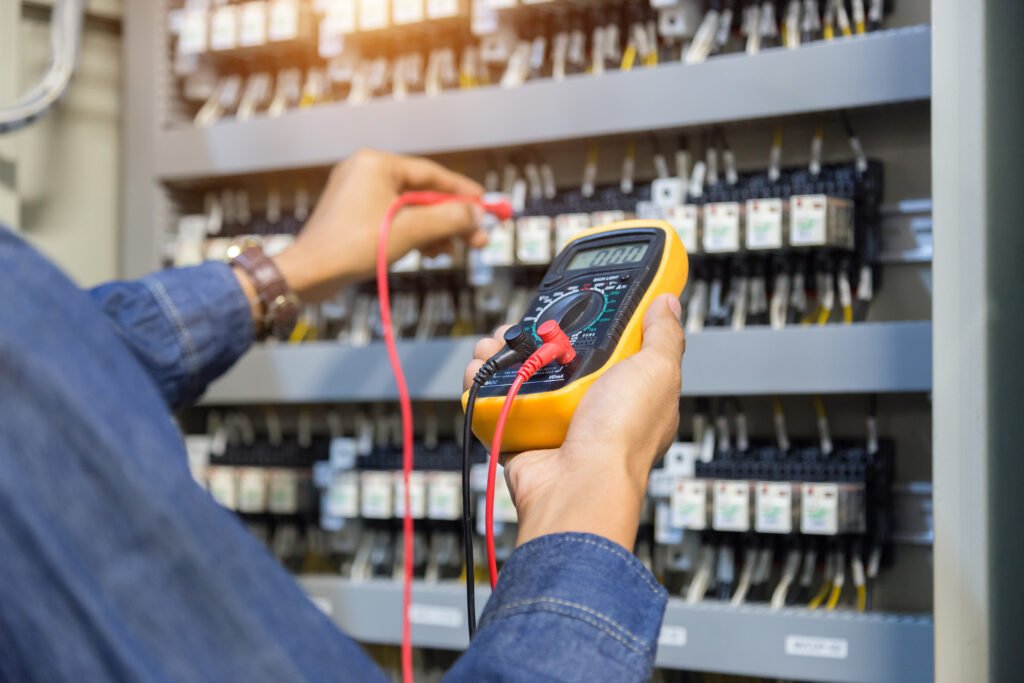
Abdullah Shoaib
Managing Director
5 min read
Last Updated August 16, 2025
What happens when your voltage drops?
To power electrical items, you need voltage, the force that pushes an electrical current through a circuit. A sudden drop in voltage might seem like a minor inconvenience – lights dim, machines slow down or devices behave erratically – but it can actually signal deeper issues in your power supply. For businesses that rely on consistent, high-quality electricity, voltage drop can affect equipment performance, efficiency and even safety.
In this guide, we’ll explain what happens when your voltage drops, what causes it and what you can do to protect your operations.
Is voltage drop dangerous?
In some cases, yes – voltage drop can be dangerous, especially in environments where equipment or systems depend on a stable electrical supply to function safely and correctly. Low voltage can cause motors to overheat, electronics to malfunction and sensitive machinery to underperform or shut down entirely.
Prolonged voltage drop can also lead to damage that builds up over time. Overheated wiring, flickering lights, and reduced appliance lifespan may seem like small concerns on the surface, but they point to ongoing strain within your system. In extreme cases, if voltage drop affects safety-critical equipment, such as fire alarms, emergency lighting or cooling systems, the consequences could be severe.
In business settings, this becomes even more important. A voltage drop during key operational hours can cause production delays, increase wear on expensive equipment and impact customer experience. Repeated disruptions can also affect staff productivity and raise maintenance costs.

What does a voltage drop do?
Voltage drop occurs when electrical current flows through a conductor (like a cable or wire) and loses some of its voltage due to resistance. This is a normal part of how electricity moves but when the voltage drop becomes too great, it leads to reduced power reaching the end device.
It can be caused by several factors, including excessive demand on the system, long cable runs or undersized wiring. It becomes especially problematic in commercial or industrial environments where systems are more complex and the stakes are higher. When voltage drops below the required level, electrical equipment may not receive enough power to function properly, which can lead to failures, faults or increased wear and tear.
Depending on the severity and duration of the problem, a voltage drop can cause:
- dimming lights and screen flickering
- poor motor performance, causing devices to run slowly or unevenly
- overheating in cables or electrical panels, increasing fire risk
- unexpected shutdowns or resets in computers, servers or machinery
- reduced efficiency in appliances, leading to higher long-term energy costs.
For example, in a commercial kitchen, voltage drop might cause ovens or refrigeration units to underperform, leading to safety and quality issues. In a data centre, it could compromise uptime or damage equipment. Even in office environments, voltage issues can affect lighting, computers and climate control systems – harming productivity and comfort.
Voltage drop is more than just a technical issue – it’s a potential threat to your business operations, safety and bottom line. While minor voltage drops are a normal part of any electrical system, consistent or severe drops should never be ignored. Monitoring your power supply and addressing voltage issues early can help prevent more serious complications and improve long-term system reliability.

Pingback: How to avoid voltage drop - Energy Solutions